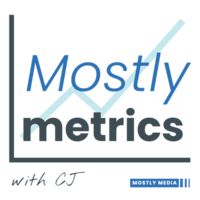👋 Hi, it’s CJ Gustafson and welcome to Mostly Metrics, my weekly newsletter where I unpack how the world’s best CFOs and business experts use metrics to make better decisions.

Thrice in my career I’ve gotten a new boss. In all instances I had been working at the company for +2 years, and knew how the place “worked.” Twice it was a new CFO when I was running FP&A, and once it was a new head of investor relations.
In all instances you inevitably panic, thinking: “What if they want to bring their own people in here and I’m out of a job?”
But if you take the glass half full view, one might reframe the situation as: “I’ve been given an opportunity to make myself indispensable.”
Because if you flip the coin on its head (or whatever the saying is), coming INTO a new org as a leader is scary. You’re expected to quickly get up to speed, make swift and decisive moves, and improve outcomes (I wrote about how to make an impact in your first 90 days here).
Therefore, it presents an opportunity for you to step up and be your new boss’ right hand… their confidant… their comfort blanket.
In all three instances I crafted a “Quick Start Guide” for my new boss. They never asked me for this, but they thanked me many times over for it. And it quickly cemented me as their go to partner as they got their feet wet.
Here’s how to build a Quick Start Guide for your boss so you can win (together) from the first inning.
1. Immediate Access to Essentials
File Organization:
This is super tactical, but CRITICAL.
Where does your team store shared files, and how are they organized? There’s nothing more frustrating than not being able to locate critical documents. Give them a lay of the land so they feel somewhat self sufficient when it comes to information gathering.

Access and Permissions:
List out all systems and tools they’ll need to access, and instructions on who gives access to what.
The “Level 10” thing to do would be list out how long the contracts are for (e.g., we’ve had FP&A Planning Tool XYZ for two years and have six months left on the contract) in case they want to refresh the tech stack.
2. Organizational Context
Subscribe to our premium content to read the rest.
Become a paying subscriber to get access to this post and other subscriber-only content.
UpgradeYour subscription unlocks:
- In-depth “how to” playbooks trusted by the most successful CFOs in the world
- Exclusive access to our private company financial benchmarks
- Support a writer sharing +30,000 hours of on-the-job insights

